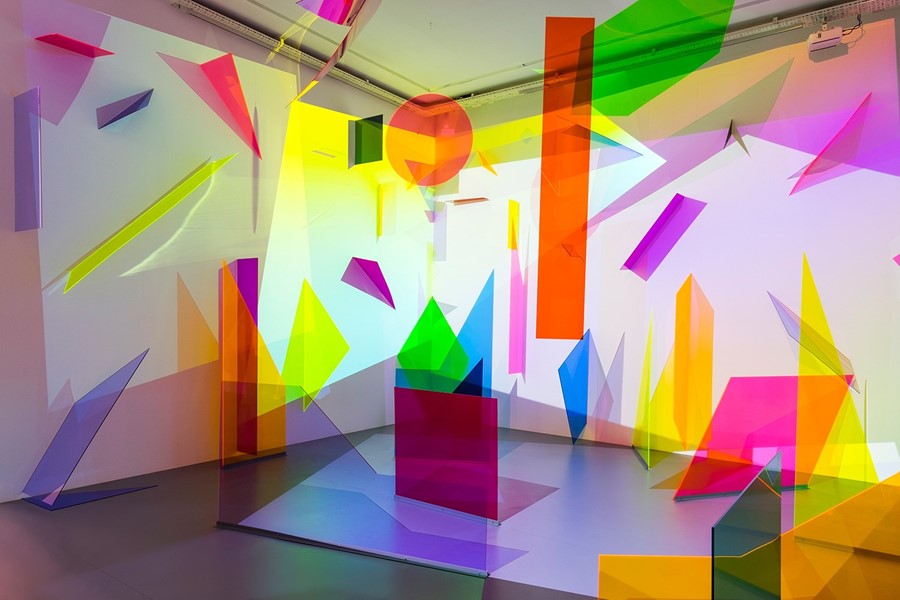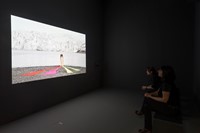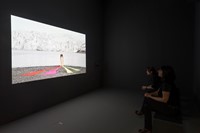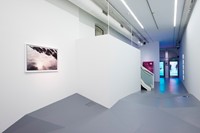Geometric shapes and neon shades collide in Bahar Yürükoğlu's politically engaging practice, a new show about which is now on at Istanbul gallery Arter
The sun is shining on Turkish artist Bahar Yürükoğlu’s long ice-white nails (“they’re real”) and day-glo pink lipstick as she sits in a café terrace on Istiklal Caddesi, the busiest street in Istanbul. On the other side of the street, a man is selling bubble blowers. A few doors down, an installation of flying lozenges, plexiglass parallelograms and other neon shapes distracts passers-by.
Titled Plexiberg, the installation stands at the entrance of Bahar’s new exhibition Flow Through at Arter, a series of ‘neo-scapes’ inspired by her 2015 trips to the Arctic Circle. Fascinated by what happens when the extremities of the natural world and the synthetic combine, the artist is so bewitched by geometry she “sees squares and triangles rather than buildings and mountains.” Air-conditioning chills the space, and a recording of melting ice fills the air.
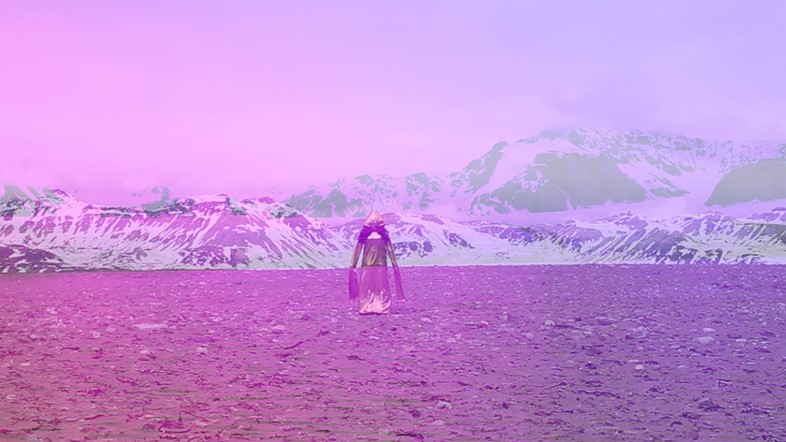
The Plexiberg’s kaleidoscopic colours and shadows are, just like Yürükoğlu's nails and lipstick, born from her aesthetic preference for neons, the ghostly and the glacial. “Like, if I was standing inside an iceberg or a glacier, this is how I’d experience it,” she says. Bahar first visited the Arctic for 18 days, travelling by boat, with no connection to the internet or outside world. She returned a few months later to find it submerged in 24-hour darkness. It felt like "another planet,” she says. Particularly compared to Istanbul.
The exhibition’s opening night was cancelled after a suicide bombing on Istiklal Caddesi, and the 4th terrorist attack in Turkey in as many months, shook the street. “I’d planned to buy some baklava nearby in Taksim for the crew on the morning of the attack, but I was late. I got a call from the curator who said 'don’t go' as an explosion had happened.” Bahar and her curator, Duygu Demir, kept preparing the show, but the street remained eerily deserted. “It’s normally packed. But everyone was running across it or taking an alleyway.”
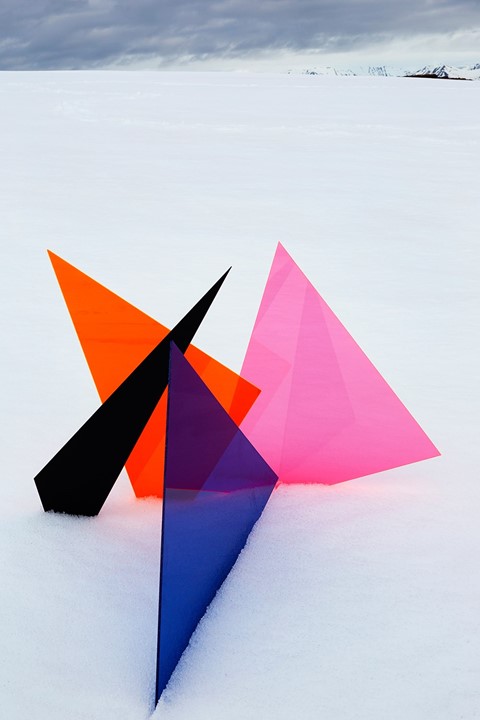
Now open, Bahar’s exhibition has accidentally taken on a new context: a portal of escapism from Turkish politics. Neon-hued pigment print photographs and videos of the Arctic landscape sit above a raised, geometric floor that forces the visitor up and down to climb across it. “For me, the Arctic is a lot about where to place your foot,” the artist says. “You can slip into quicksand that you don't realise is there. Or, step on a really tiny flower that’s been trying to grow for decades – and you’ve killed it in a second.”
In her 13-minute video piece The Navigator, Bahar travels across the Arctic’s stark backdrops, wearing a long-sleeved gold cape based on Ottoman kaftans. “I added a hood so you can’t see who's wearing it – it could be anyone. The gold is how we keep warm, reflect the sun or send a signal.” It’s a get-up that brings to mind the capes of the Bronze Age, or the robes of Sun Ra, the costumes of Mexican Lucha Libre wrestlers, or, as Bahar realised upon her return to Istanbul, the heat-reflecting emergency blankets distributed to refugees. “It fits. This idea of migration and moving through a foreign landscape and not knowing what you’re heading towards.” The video is cut with the orbiting image of a disco ball along with a recording of African drumming, performed at the Yaam cultural centre and beach club in Berlin. “I’d just got back from the Arctic and I was watching this African drumming in Berlin, and I thought, this is so strange, the culture we take with us when we go places.”
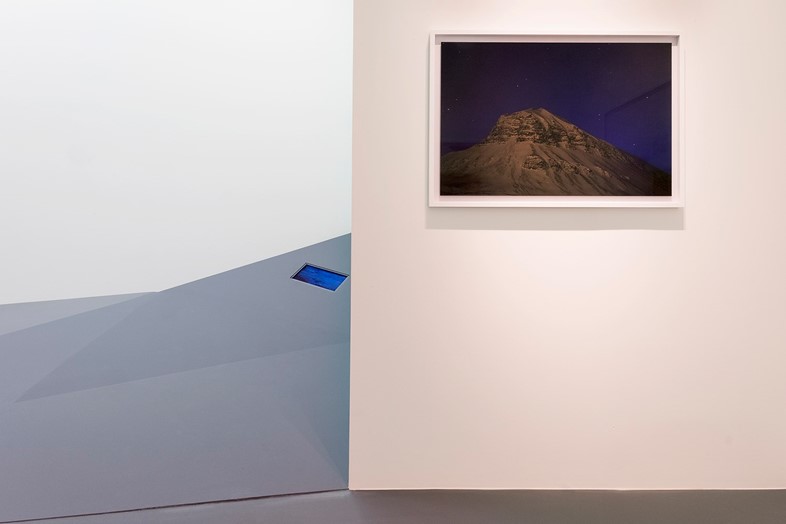
Preoccupied as Yürükoğlu is with our possible futures rather than the political present, she acknowledges the new light the show’s polar postcards have found themselves in. As pedestrians return to the sunshine of Istiklal Caddesi, the street recovers from its recent trauma, and Bahar’s neon wilderness acts as a breath of fresh Arctic air. “What’s important for me is that it can become an area where people can forget everything for a little bit, even for five minutes.”
Bahar Yürükoğlu: Flow Through runs until May 15, 2016 at Arter, Istanbul.
